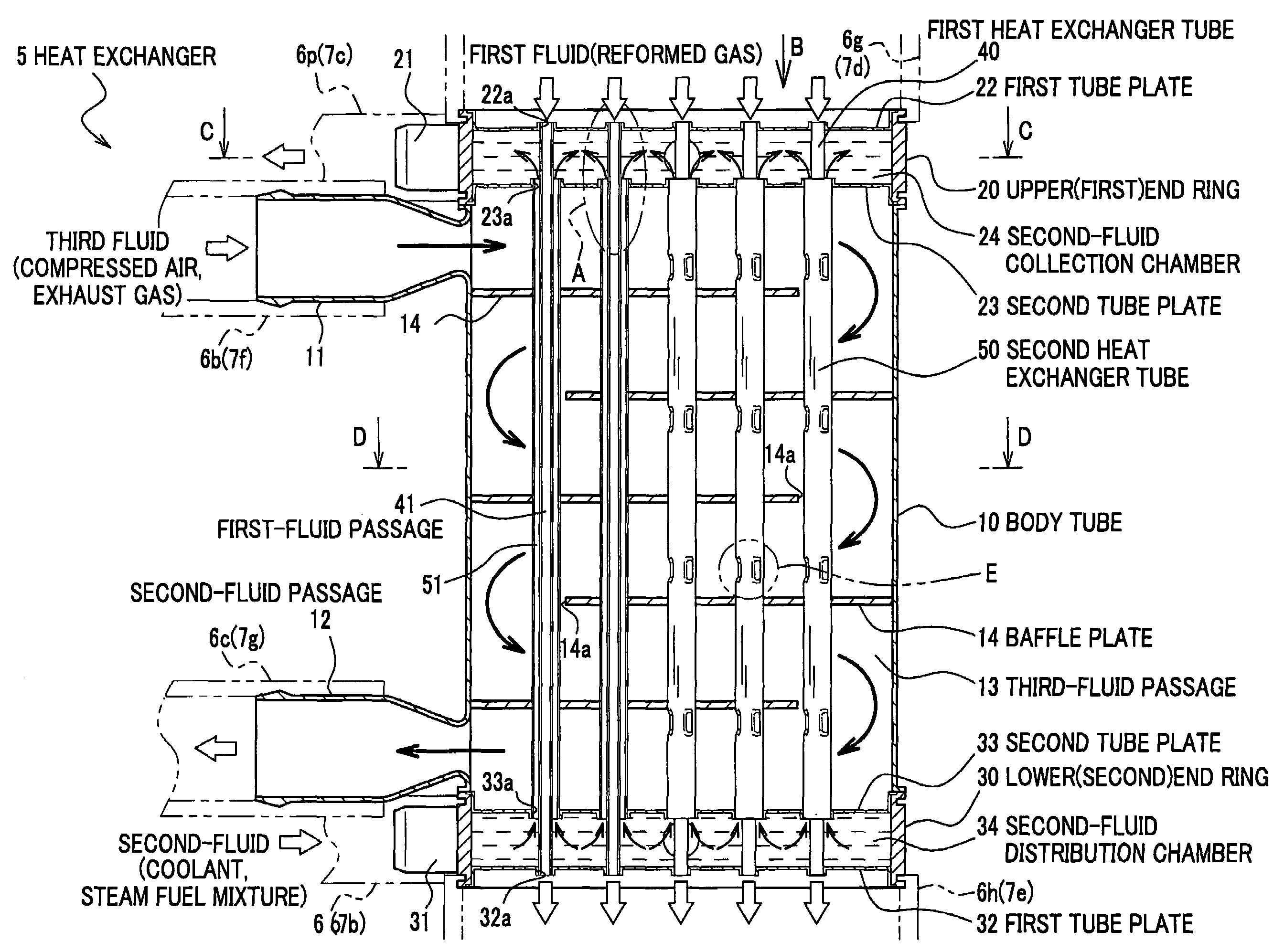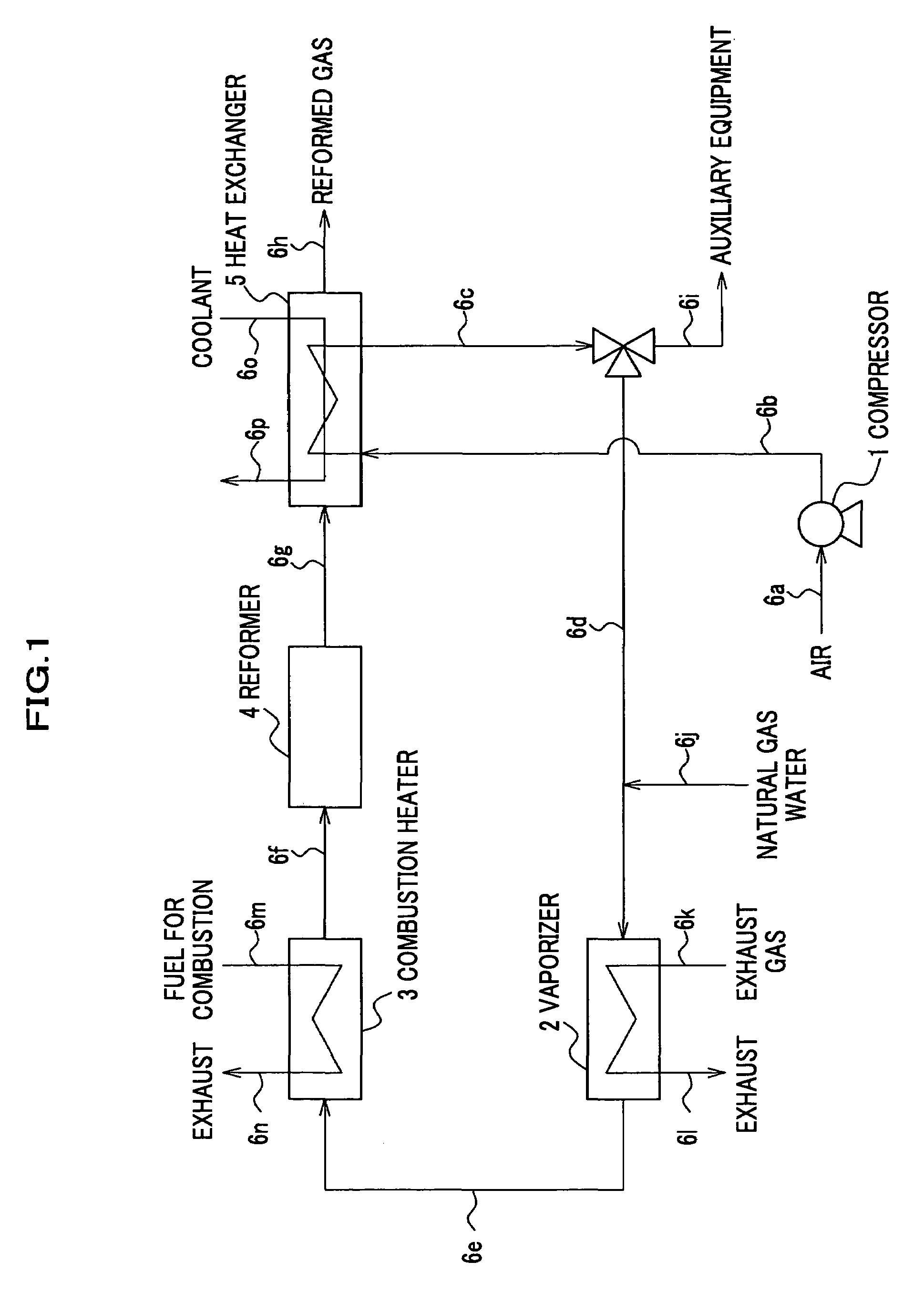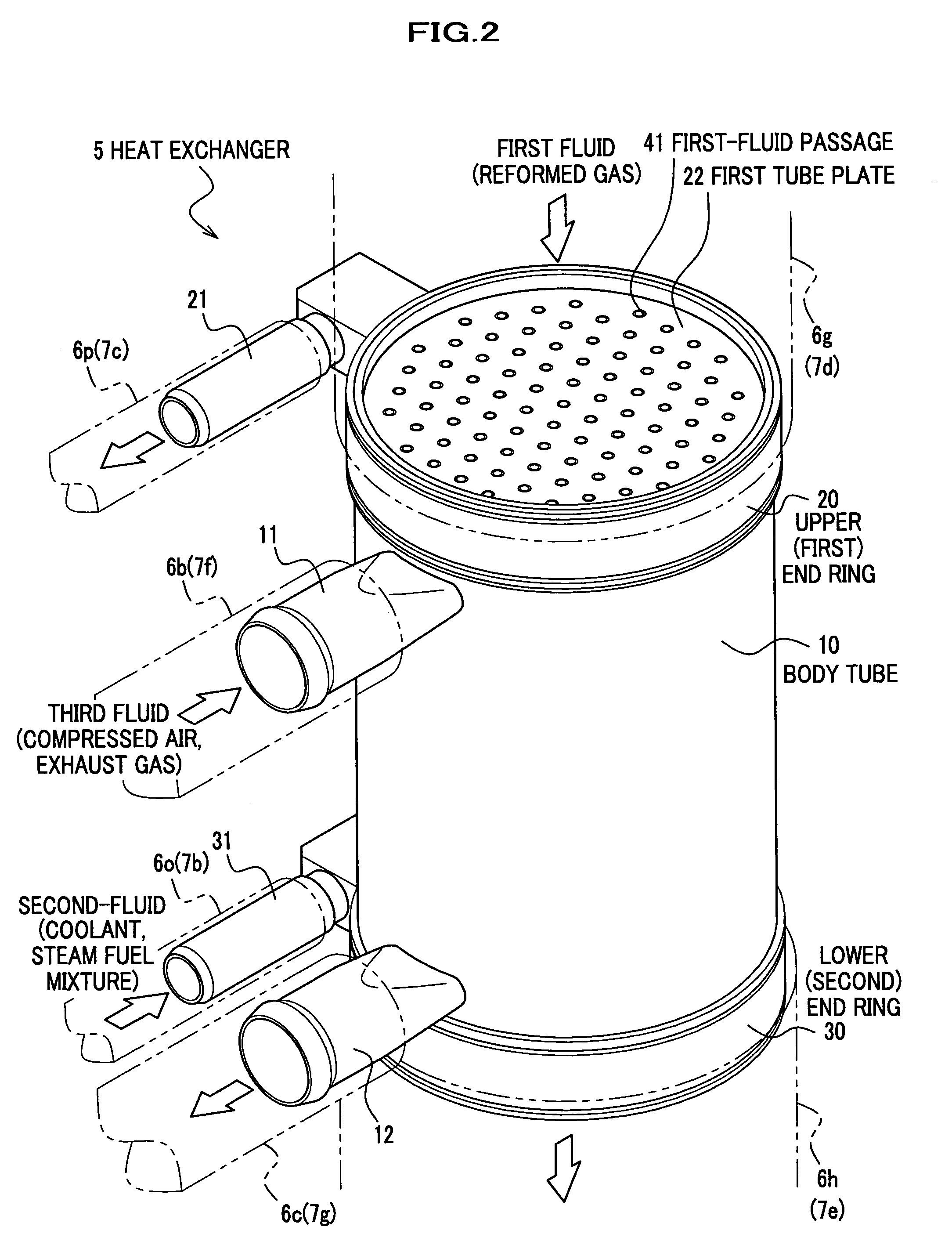Heat exchanger
a heat exchanger and fluid technology, applied in the field of heat exchangers, can solve the problems of reducing the operation efficiency of the fuel reforming system, difficult to improve the heat exchange performance, and unable to achieve the heat exchange among three or more fluids, so as to improve the efficiency of heat exchange, reduce the foot print and manufacturing cost of the system or device using the multiple fluid heat exchanger, and improve the efficiency of cooling
- Summary
- Abstract
- Description
- Claims
- Application Information
AI Technical Summary
Benefits of technology
Problems solved by technology
Method used
Image
Examples
first embodiment
[First Embodiment]
[0031]A detailed description will be given of a heat exchanger according to a first embodiment of the present invention with reference to FIGS. 1 through 10, in which the heat exchanger is provided in two types of fuel reforming systems.
[0032]Hereinafter described is a first fuel reforming system that is configured to cool compressed air and a reformed gas using a coolant. The first fuel reforming system as shown in FIG. 1 includes a compressor 1, a vaporizer 2, a combustion heater 3, a reformer 4, a heat exchanger 5, and piping (pipes 6a–6p) installed to couple these units together. The compressor 1 generates compressed air to be supplied to the reformer 4 and other auxiliary equipment of various kinds. The vaporizer 2 heats a natural gas and water supplied from a feedstock supply system (not shown), together with the compressed air supplied from the compressor 1, to generate a steam fuel mixture. The combustion heater 3 burns a combustible fuel (e.g., a natural g...
second embodiment
[Second Embodiment]
[0057]A description will be given of a heat exchanger according to a second embodiment of the present invention with reference to FIG. 11. The heat exchanger 5 according to the second embodiment is, as shown in FIG. 11, substantially the same in structure as that according to the first embodiment, except that the body tube 10 serving to make up a shell of the heat exchanger 5 in the first embodiment is not provided; therefore, a duplicate description of the structure of the heat exchanger 5 is omitted herein.
[0058]The heat exchanger 5 according to the second embodiment lends itself, for example, to particular applications such that a high-temperature gas (first fluid) passing through first-fluid passages 41 is cooled using a coolant (second fluid) passing through second-fluid passages 51, and the coolant passing through the second-fluid passages 51 is cooled using air (third fluid) flowing around the second heat exchanger tubes 50. To be more specific, the heat ex...
third embodiment
[Third Embodiment]
[0059]A description will be given of a heat exchanger according to a third embodiment of the present invention with reference to FIG. 12. The heat exchanger 5 according to the third embodiment is, as shown in FIG. 12, substantially the same in structure as that according to the second embodiment, except that a plurality of cooling fins 15 are provided in the third-fluid passage 13. The fins 15 may be attached to the outer walls of the second heat exchanger tubes 50 and exposed to the third-fluid passage 13. The heat exchanger 5 according to the third embodiment may be suitable for such particular applications as mentioned above in describing the second embodiment.
PUM
| Property | Measurement | Unit |
|---|---|---|
| temperature | aaaaa | aaaaa |
| temperature | aaaaa | aaaaa |
| temperature | aaaaa | aaaaa |
Abstract
Description
Claims
Application Information
 Login to View More
Login to View More - R&D
- Intellectual Property
- Life Sciences
- Materials
- Tech Scout
- Unparalleled Data Quality
- Higher Quality Content
- 60% Fewer Hallucinations
Browse by: Latest US Patents, China's latest patents, Technical Efficacy Thesaurus, Application Domain, Technology Topic, Popular Technical Reports.
© 2025 PatSnap. All rights reserved.Legal|Privacy policy|Modern Slavery Act Transparency Statement|Sitemap|About US| Contact US: help@patsnap.com



